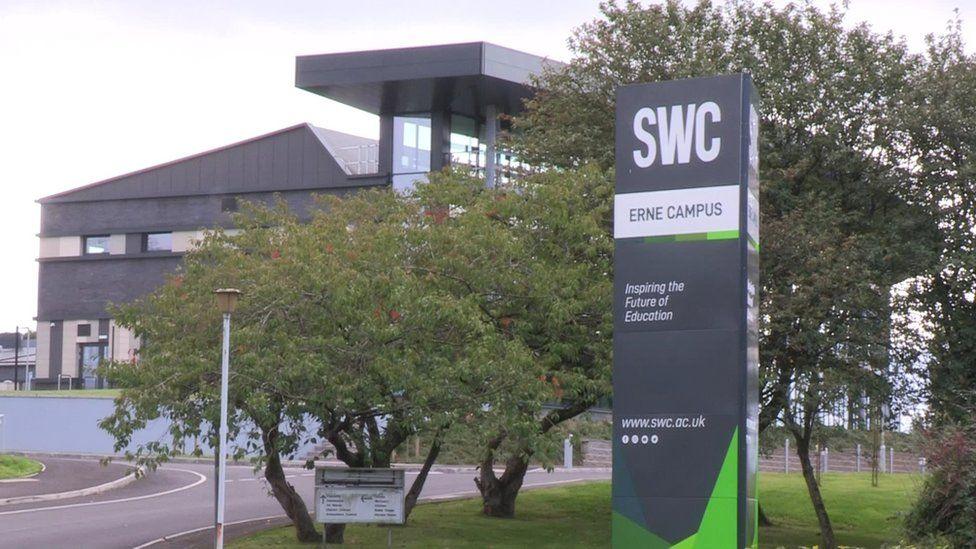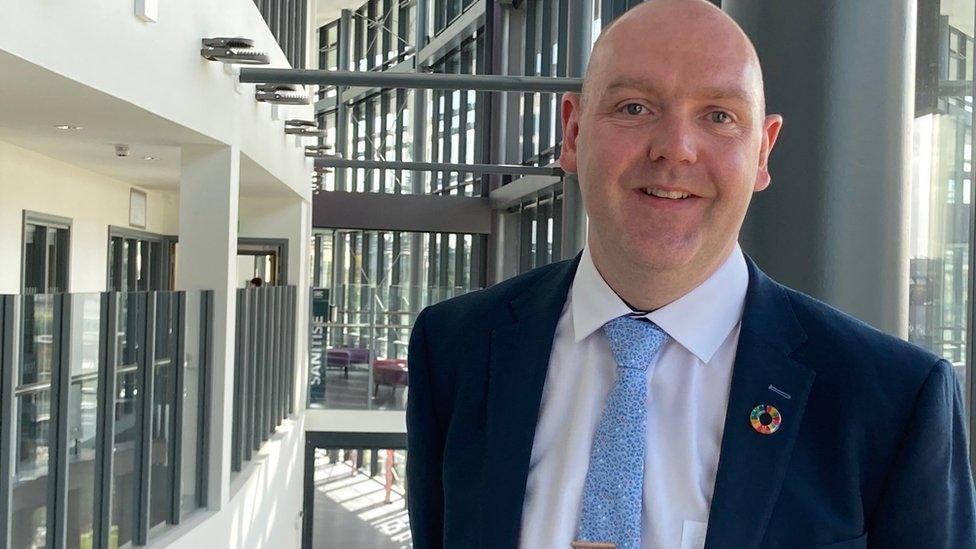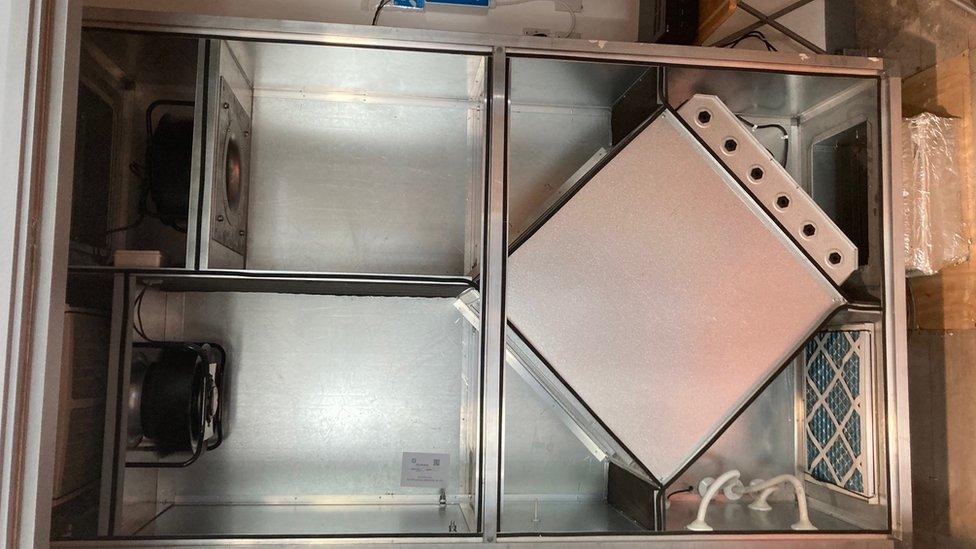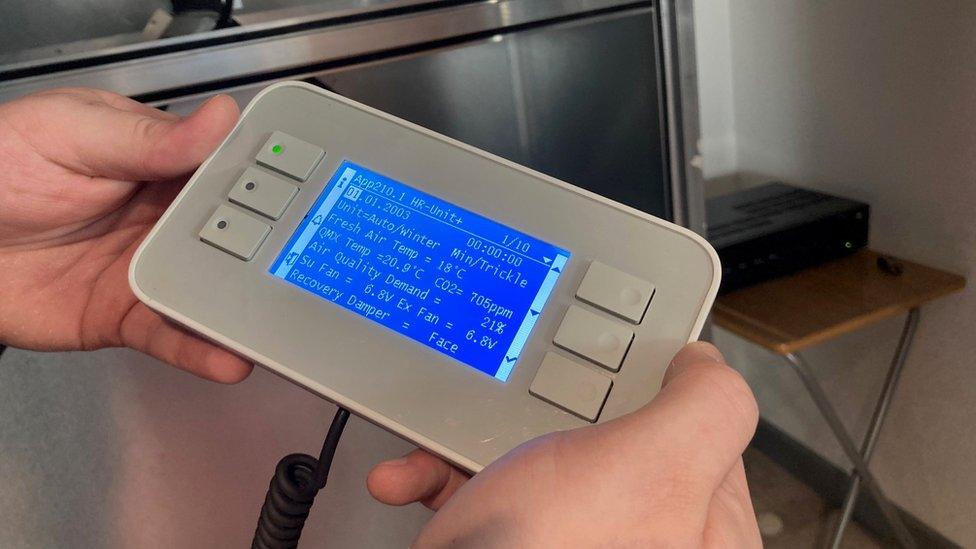South West College in Enniskillen gets UN green recognition
- Published

The £30m facility officially opened in September
The South West College in Enniskillen has been recognised as a UN Centre of Excellence for High Performance Buildings.
The £30m facility officially opened in September.
Staff and students relocated from the 50-year old Fairview campus at Gaol Square in the town.
The new college building is among the most environmentally friendly in the world.
It has both PassivHaus Premium and BREEAM (Building Research Establishment's Environmental Assessment Method) accreditation - the highest environmental standards in construction.
Now, it has joined 25 other buildings around the world as exemplars of green construction.

Dr Barry McCarron said the possibilities were endless in the field of sustainable construction
"With that global network, I think the possibilities are endless for what we can do in the whole field of sustainable construction," said Dr Barry McCarron, the head of business development at the South West College.
"With 40% of global emissions coming from buildings, I think it's a real low-hanging fruit.
"And I think the UN have correctly identified that having a network globally to advocate for high performance buildings, it's really exciting."
The building is mostly powered by solar panels on its roof.
The windows that create its frontage, standing above the River Erne in Ireland's only island town, are triple-glazed, and open and close according to the demands of the indoor temperature.
Warmth is provided by the heat recovery system - the "lungs" of the building.

The building's warmth is provided by the heat recovery system
"Basically, you have a system inside a building," Dr McCarron said.
"As the air is leaving the building, there's a heat exchanger and it'll store the heat as it is leaving.
"And at the very same time, incoming air passes through. They don't touch each other; the two airs don't contaminate.
"But one takes the heat from the other as they're going through.
"And that happens 24/7. So you're getting free heat, in effect."
It's controlled by a small electronic panel, which also assesses the amount of carbon dioxide in the air.

The system is controlled by a small electronic panel, which also assesses the amount of carbon dioxide in the air
If the system detects that the building is not well enough ventilated for the number of people in it, the windows automatically open to bring in more fresh air and protect the health and wellbeing of everyone indoors.
The £30m project has now become a kind of living laboratory for the students who go there.
"In almost all disciplines, we're getting into this area of sustainability, where we can influence things," Dr McCarron said.
"Even in hair and beauty, we're looking at some of the chemicals that are in.
"So this is a real legacy from the building.
"For the construction students in particular, they're getting exposed to all sorts of opportunities, particularly travel within the PassivHaus community globally.
"But also with the technologies that are available in the building itself."